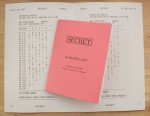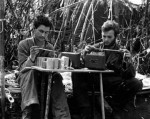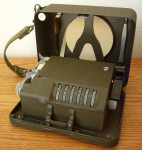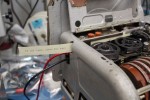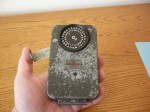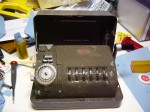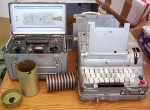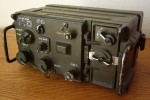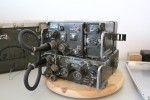
Back in 2009, I posted about a demilitarized KY-38 NESTOR voice encryption device. Since then, I’ve procured another one. Like the first one, it has been demilitarized (that is, rendered inoperable and unclassified) by removal of key internal components, removal of the original dataplate, and (for some reason I don’t understand) removal of the battery box. But unlike the first one, this one came with a 28″ cable to plug it into the AN/PRC-77 radio, and a matching transit case! There was even an old trouble ticket lost under the padding, though it was for a different unit based on the serial number.

